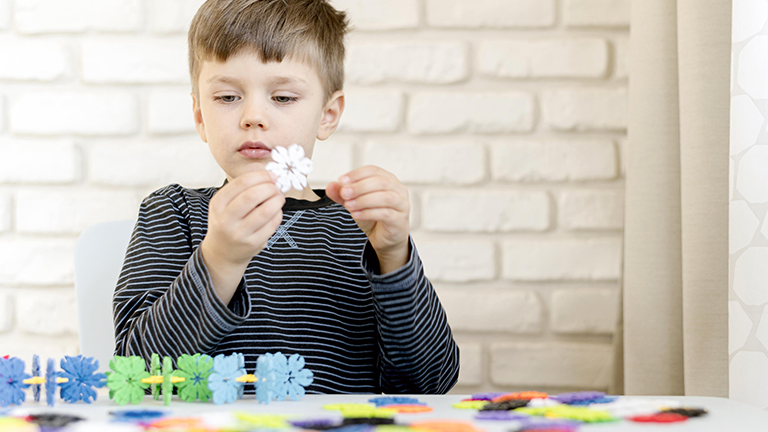What is Signs of Autism in Children Under 5? Autism Spectrum Disorder (ASD) is a neurodevelopmental condition that affects communication, social interaction, and behavior. Children with autism may have difficulty understanding social cues, expressing emotions, or engaging in typical play activities. They often exhibit repetitive behaviors, restricted interests, and sensory sensitivities. Autism varies in severity and can affect each child differently. Early detection and intervention are crucial for supporting development, improving communication, and fostering independence. Resources and therapies are available to help children reach their full potential.
Table of Contents Early Signs of Autism in Children Under 5
- Introduction
- Common Signs of Autism in Children Under 5
- Red Flags at Different Ages
- Causes and Risk Factors
- Diagnosis and Screening
- How to Support a Child with Autism
- When to Seek Professional Help
- Conclusion
Introduction
Autism Spectrum Disorder (ASD) is a complex developmental condition that affects millions of children globally, influencing social communication, behaviour, and sensory processing. Understanding the signs of autism in children under 5 is crucial for early detection and intervention. Early identification allows parents, caregivers, and educators to implement therapy, support strategies, and educational interventions that improve developmental outcomes. This comprehensive guide provides parents in the US, UK, Canada, and worldwide with actionable insights to recognize early autism signs, developmental delays, and behavioural indicators to ensure timely professional guidance.
Common Signs of Autism in Children Under 5
Social Interaction and Communication Signs
Children with autism may demonstrate challenges in social interaction and communication. Key signs include:
- Limited or inconsistent eye contact with caregivers and peers.
- Difficulty understanding or expressing emotions.
- Minimal response to their name or social cues.
- Challenges forming peer relationships and engaging in group play.
- Reduced or absent gestures like pointing, waving, or showing objects.
Parents can use developmental checklists to monitor social engagement and identify early autism warning signs in toddlers and preschoolers.
Behavioural Signs and Repetitive Patterns
Repetitive behaviours and restricted interests are often present in children with autism:
- Hand flapping, rocking, spinning, or repetitive movements.
- Rigid adherence to routines and distress with changes.
- Intense focus on specific toys, objects, or subjects.
- Limited imaginative or pretend play.
Recognising these patterns early can help parents establish structured routines that enhance cognitive and social development.
Language and Speech Delays
Language delays are a common early sign of autism:
- Delayed speech development or absence of verbal communication.
- Minimal use of gestures for communication.
- Difficulty understanding instructions or questions.
- Echolalia, or repeating words and phrases rather than spontaneous speech.
Early intervention with speech and language therapy can significantly improve communication skills and overall developmental outcomes.
Sensory Sensitivities
Many children with ASD display unusual sensory responses:
- Over- or under-sensitivity to sounds, lights, textures, or tastes.
- Engagement in sensory-seeking behaviours like spinning, jumping, or repetitive touching.
- Discomfort with clothing textures, certain foods, or environmental stimuli.
Understanding sensory needs helps parents create supportive environments that reduce stress and facilitate learning.
Red Flags at Different Ages
Signs in Infants (0 to 12 months)
- Limited social smiling or poor responsiveness to caregivers.
- Minimal babbling or cooing.
- Poor eye contact and limited interest in faces.
- Unusual body movements, stiffness, or rigidity.
Signs in Toddlers (1 to 3 years)
- Delayed speech or minimal verbal communication.
- Difficulty with social play or imitation.
- Strong focus on specific objects or routines.
- Resistance to environmental or routine changes.
Signs-in Preschoolers (3 to 5 years)
- Challenges with peer interaction and cooperative play.
- Persistent repetitive behaviours and narrow interests.
- Difficulty interpreting social cues and emotions.
- Ongoing speech delays or unusual language patterns.
Causes and Risk Factors
Autism arises from a combination of genetic and environmental factors:
- Family history of ASD or other developmental conditions.
- Genetic mutations affecting brain development.
- Prenatal exposure to medications, infections, or environmental toxins.
- Premature birth, low birth weight, or neonatal complications.
Understanding these risk factors helps parents monitor developmental progress closely and seek timely interventions.
Diagnosis and Screening
Early evaluation and diagnosis are essential. Paediatricians use standardised tools including:
- M-CHAT (Modified Checklist for Autism in Toddlers)
- ADOS (Autism Diagnostic Observation Schedule)
- Comprehensive developmental assessments
Screening is recommended at 18 and 24 months, or sooner if concerns arise. Early intervention programs target social, behavioural, and communication skills, which significantly improve long-term development.
How to Support a Child with Autism
Communication Strategies
- Use visual supports, gestures, and social stories to improve understanding.
- Encourage verbal communication and reinforce attempts.
- Implement structured routines and model behaviours consistently.
Behavioural Therapy Options
- Applied Behaviour Analysis (ABA) to improve social and cognitive skills.
- Occupational therapy for sensory integration and daily living skills.
- Speech therapy to strengthen communication abilities.
Creating a Supportive Home Environment
- Maintain predictable routines to reduce anxiety.
- Provide sensory-friendly spaces and activities.
- Use positive reinforcement to encourage desired behaviours.
- Regularly monitor developmental progress and adapt strategies as needed.
When to Seek Professional Help
Parents should consult specialists if they observe:
- Persistent speech or language delays.
- Social interaction difficulties or avoidance behaviours.
- Repetitive behaviours that interfere with daily activities.
- Severe sensory sensitivities causing distress or behavioural issues.
Early evaluation by a developmental paediatrician, psychologist, or autism specialist ensures access to effective interventions that maximise developmental outcomes across the US, UK, Canada, and globally.
Conclusion
Recognising the signs of autism in children under 5 is crucial for timely intervention and support. Early identification of behavioural patterns, language delays, social challenges, and sensory sensitivities allows parents and caregivers to implement effective strategies. Structured routines, therapies such as ABA, speech, and occupational therapy, and a supportive home environment can significantly improve developmental outcomes. For detailed guidance and resources, visit Autism Speaks – Early Intervention, CDC – Autism Screening, and National Autistic Society for expert advice and support.



